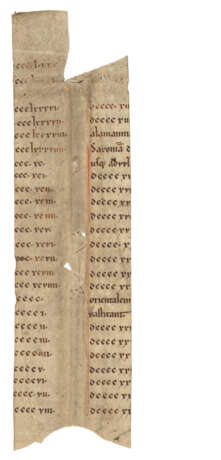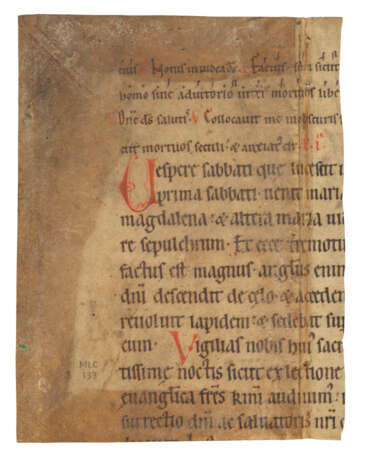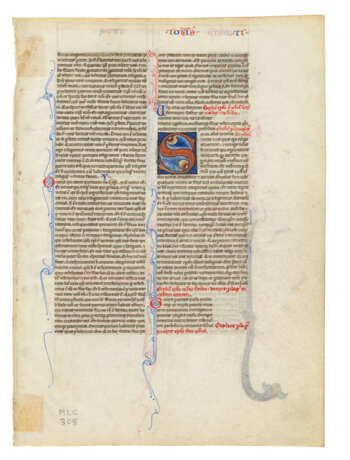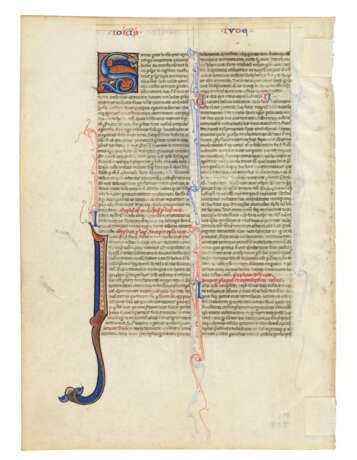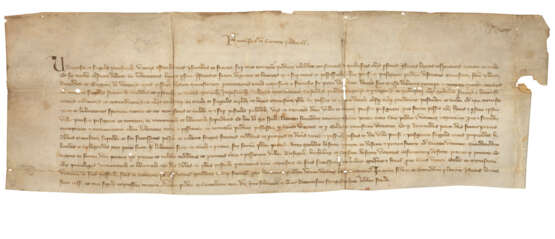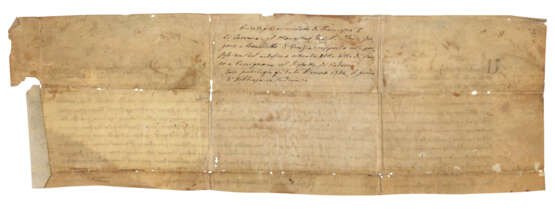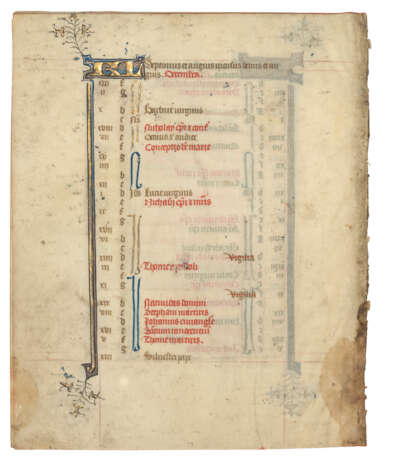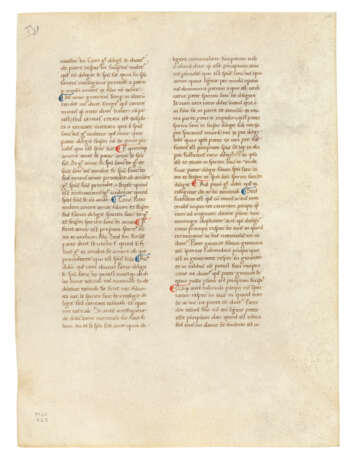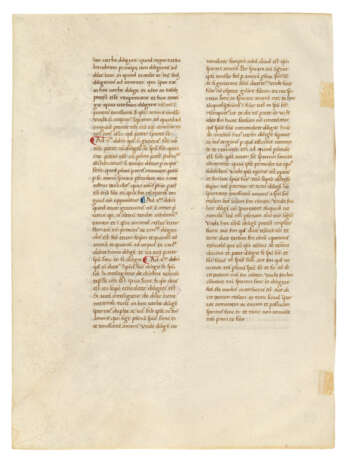ID 869559
Lot 152 | A Study Group
Estimate value
£ 4 000 – 6 000
A study group of leaves and fragments, in Latin, manuscripts on vellum [12th to 15th centuries]
A selection of manuscripts from Western Europe, including an Italian 14th-century privilege, part of an early French chronicle, liturgical texts, and a charming 15th-century illuminated Calendar featuring early English saints.
Comprising:
(i) A fragmentary strip from a Chronicle [France, c.1200].
c.270 × 70mm. Remains of 25/26 lines, ruled in red and brown ink, written in a fine early gothic display script from a large format manuscript, 2-line initial 'S' (clean tear but aside from the trimming in good condition). One side of the fragment is devoted to chronological calculations from Adam, from the beginning of the World to the Flood, from the Flood to King David, from King David to the Ascension of Jesus. There are repeated references to Adam and the beginning of the World. Saint Jerome is cited (probably a reference to his own revision of the Chronicle of Eusebius). On the other side of the fragment are dates generally without events filled in; but in the few instances where events do accompany their dates, there is mention of the (Germanic) Alamanni, Saxony, and the devastation of eastern [...] (text cut away)].
Provenance: Colker MS 495; acquired in 2002 from Quaritch.
(ii) A fragment from a noted Breviary [Germany, 12th century].
c.150 × 115mm. The upper corner of a leaf, preserving part of 15 lines, blind-ruled, written in a protogothic bookhand, with neums (stained and creased from use in a binding).
Provenance: (1) Used in the binding of a copy of Theodorus, Zurich, 1546; (2) Colker MS 133; acquired in 1967 from Maggs.
(iii) A leaf from a Bible [Italy, 13th century].
c.170 × 124mm. 2 columns of 53 lines, written in a very small gothic bookhand, with 3 large initials on blue and brown grounds, 1 with a monstrous figure, and smaller penwork initials with foliate ornament forming a vertical border; with text comprising part of I John-III John, all of the Epistle of Jude, and part of a prologue to Revelation.
Provenance: (1) Otto Ege (S. Gwara, Otto Ege’s Manuscripts, 2013, HL9; (2) Maggs, Bulletin 11 (Nov. 1982), no 39 and pl. X; (3) Colker MS 308; acquired in 1983 from Maggs.
(iv) A Privilege to the Benedictine monastery of Saints Hilary, Benedict, and Gregory at Venice, from Franciscus de Carraria, Padua, 1364.
c.365×155mm. 14 lines.
Provenance: Colker MS 151; acquired in 1969 from Renzo Rizzi.
(v) Six leaves from a Calendar [England, 15th century].
c.175 × 143mm. Ruled in plummet for 33 lines, with 12 illuminated initials and borders, with foliate ornament; with a number of English saints: Saints Wulfstan, Edward, Cuthbert, Alphege, Dunstan, Aldhelm, Augustine of Canterbury, Alban, Edmund, and Thomas Becket (upper margin trimmed, bottom margin of the 4th leaf trimmed, light staining).
Provenance: Colker MS 235; acquired in 1973 from Maggs.
(vi) A leaf from Thomas Aquinas, Scriptum super libros Sententiarum [Italy, 15th century].
c.288 × 215mm. 2 columns of 37 lines, blind-ruled, written in a humanistic bookhand; with text comprising part of Distinctio 32.1.2.
Provenance: (1) Otto Ege (Gwara, HL40); (2) Colker MS 467; acquired in 1996 from Maggs. For a detailed discussion of the provenance see the blogpost dated 22 May 2021 at mssprovenance.blogspot.com.
| Auction house category: | Medieval & renaissance manuscripts |
|---|
| Auction house category: | Medieval & renaissance manuscripts |
|---|
| Address of auction |
CHRISTIE'S 8 King Street, St. James's SW1Y 6QT London United Kingdom | |
|---|---|---|
| Preview |
| |
| Phone | +44 (0)20 7839 9060 | |
| Buyer Premium | see on Website | |
| Conditions of purchase | Conditions of purchase |

